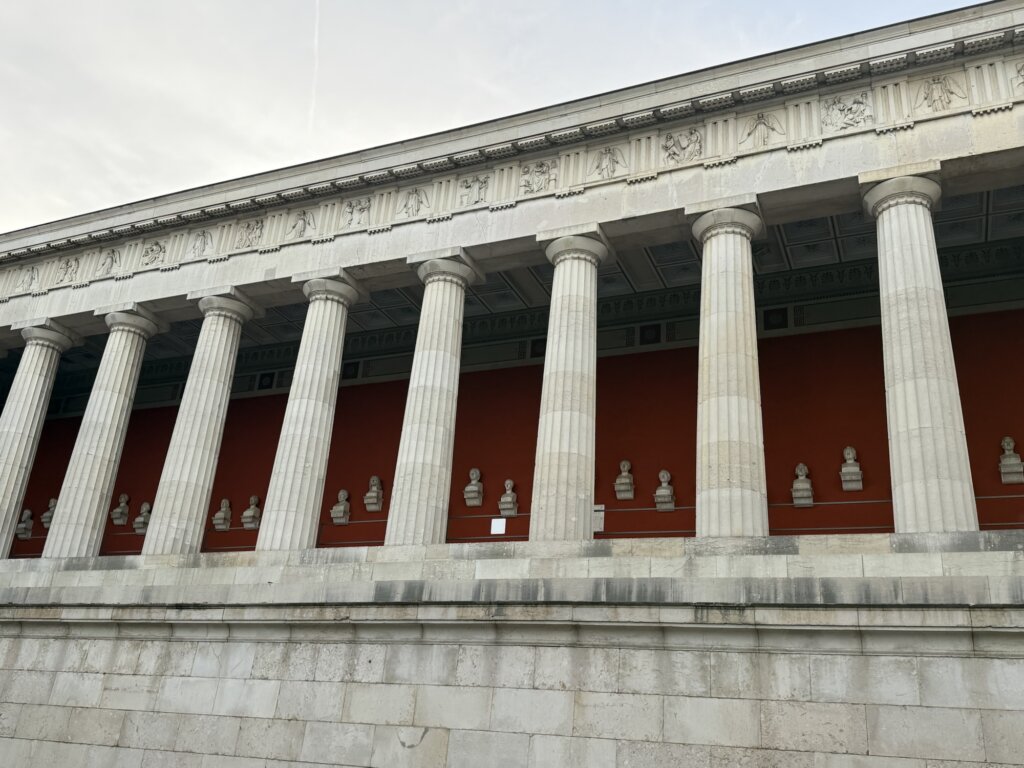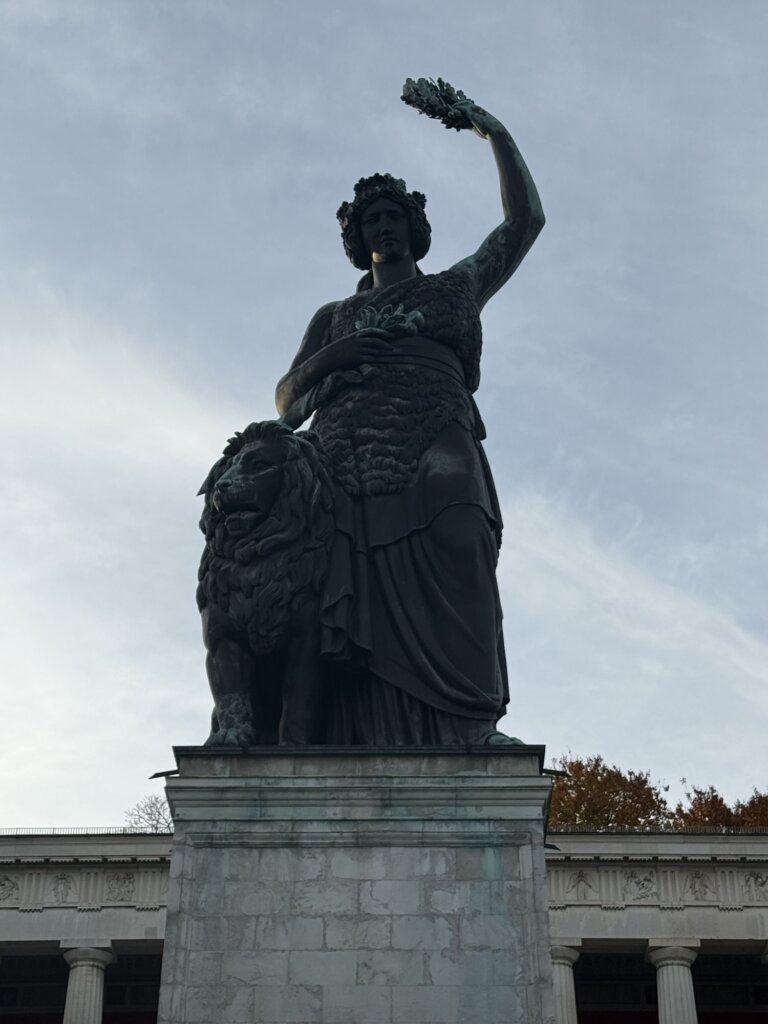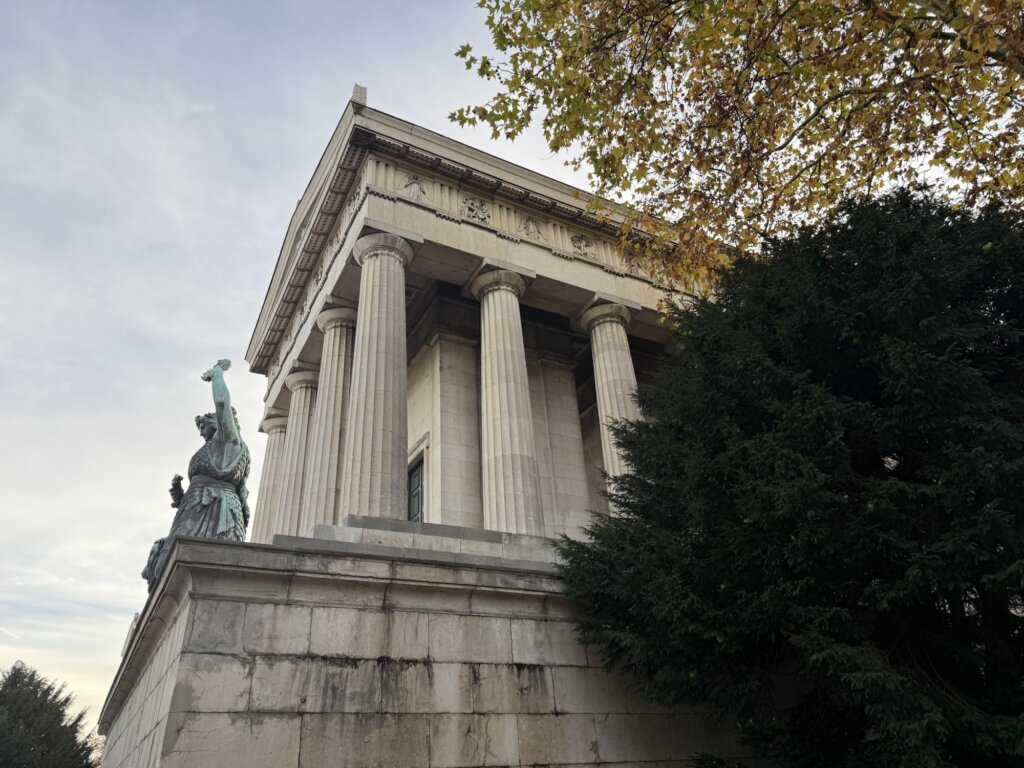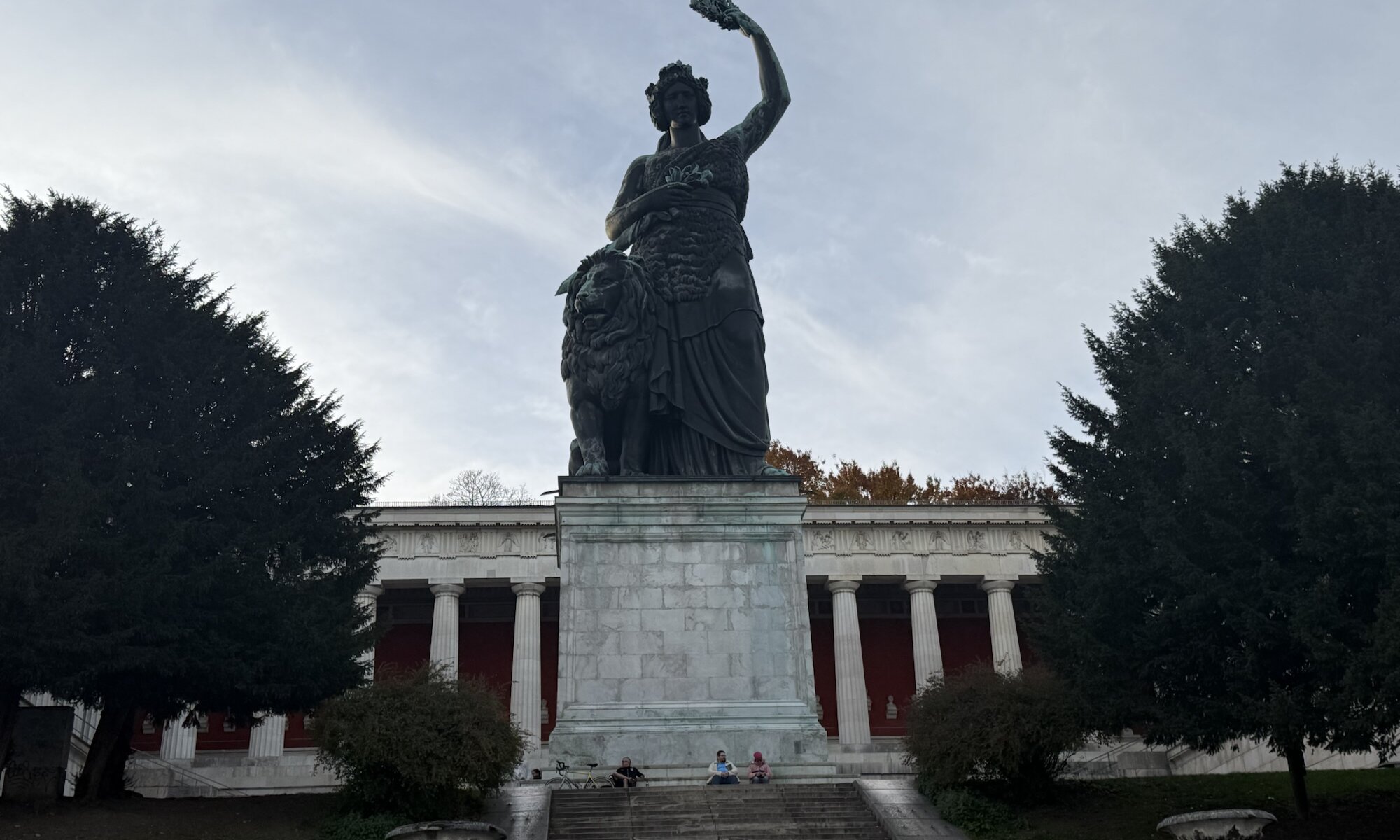The Ruhmeshalle in München stands as a grand neoclassical monument, overlooking the Theresienwiese from its elevated position on the western edge of the city centre. Designed by the renowned architect Leo von Klenze and commissioned by King Ludwig I of Bavaria, it was completed between 1843 and 1853. Its purpose was to serve as a hall of fame, celebrating figures who had made distinguished contributions to Bavarian culture, science, and public life. The open colonnade, built in the style of a Greek temple, forms a semi-circle that conveys both prestige and reverence, harmoniously blending with Münchens 19th-century architectural spirit.



Inside the colonnade are busts of more than 80 notable Bavarian men and women. Among them are monarchs such as Ludwig I himself, artists like Albrecht Dürer, scientists including Justus von Liebig, and reformers from various walks of life. Every new addition follows the same artistic tradition: a marble likeness placed under the direction of the Bavarian Academy of Fine Arts. Together, these busts represent a cross-section of Bavaria’s intellectual and cultural achievements, creating a collective portrait of the region’s enduring legacy.
In front of the Ruhmeshalle towers the colossal bronze statue of Bavaria, a masterpiece by Ludwig Schwanthaler cast by Ferdinand von Miller. Standing at 18.5 metres high, she represents the personification of the Bavarian state and its virtues – strength, wisdom, and unity. The statue’s raised hand holds a laurel wreath, symbolising glory and honour, while at her side rests a lion, the heraldic animal of Bavaria. Visitors can even climb inside the statue up to the viewing platform in her head, from which there is a splendid panorama across the city and down to the fairground below.
That fairground, the Theresienwiese, is not only the ceremonial backdrop for these symbols of Bavarian pride but also the lively heart of the world-famous Oktoberfest. Named after Princess Therese of Saxe-Hildburghausen, whose wedding celebrations in 1810 gave birth to the event, the site hosts millions of visitors every autumn. Amid tents, music, and traditional attire, the Theresienwiese transforms into a vast festive arena, yet the Ruhmeshalle and the statue of Bavaria look on in peaceful grandeur, embodying the state’s proud balance between heritage and celebration.
Ruhmeshalle & Bavaria
Theresienwiese
München
Germany
Loading map...


